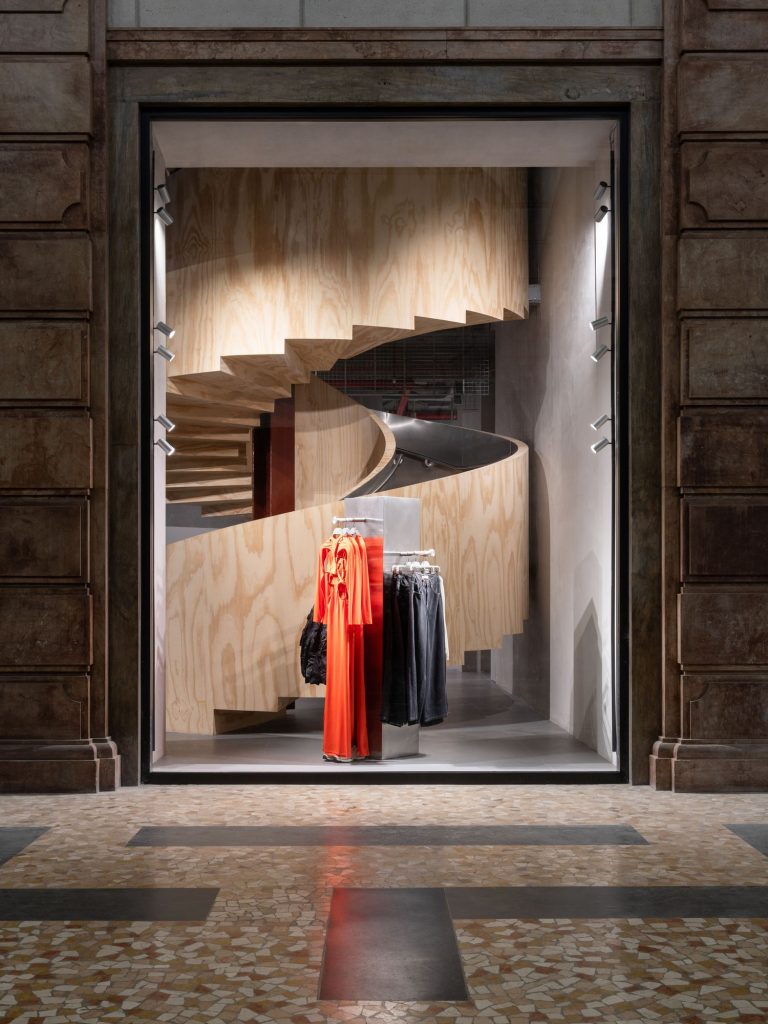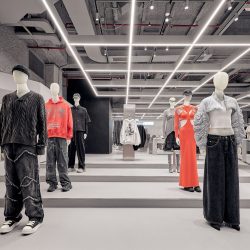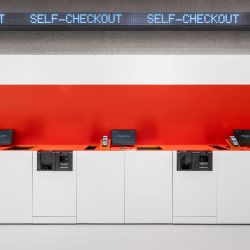
OMA . photos: © Marco Cappelletti
The rise of online shopping has not brought about the anticipated demise of the brick-and-mortar store. On the contrary, it exalted its relevance. No longer merely displaying and stocking merchandise, the store emerges as a space of rediscovered architectural quality in which online and in-person shopping find a mutually stimulating coexistance.
Amidst the challenges faced by the retail industry under pandemic restrictions, AMO took on the task of rethinking Bershka’s retail strategy. The question was how Bershka could evolve from a typical fast fashion store to an omnichannel hub. Our answer centered on three main goals: 1. Accommodate diverse visitor journeys as shopping becomes a more diverse activity (some buy online and pick up in-store, others try in-store and buy online, and many return their online purchases); 2. Redefine the layout around services rather than products, shifting the services from the periphery of the store to the center in the form of ‘islands’ with a strong visual identity; 3. Increase and diversify the services, enabling shopping at different paces, whether it be a quick visit or a leisurely, engaged exploration.
The Bershka Flagship Milano is the first to embody these ideas. It also presented the challenge to apply thm to an existing space in a historical building. Occupying the first three floors of a former cinema along Corso Vittorio Emanuele II, the store has maintained a rather unremarkable presence over the last decade in an area oversaturated with retail. The new design establishes a new interface with the city, opening up the store to the street and the adjacent Galleria del Corso. Inside, its redefined services are hosted by an array of structures scattered not only in plan but also in section, from freestanding objects to dedicated corners.
Bershka Marineda articulates the new retail strategy as a shop-in-shop typology. Covering 1,400 square meters within the largest shopping center in Galicia, the store integrates its redesigned services on a single floor. In contrast to the fully transparent storefronts typical of indoor shopping centers, Bershka Marineda is designed with a façade in opaque stainless steel that refers to department stores entered from the street. Large openings allow for views onto the dynamics of the interior and highlights of the collection.
_







































